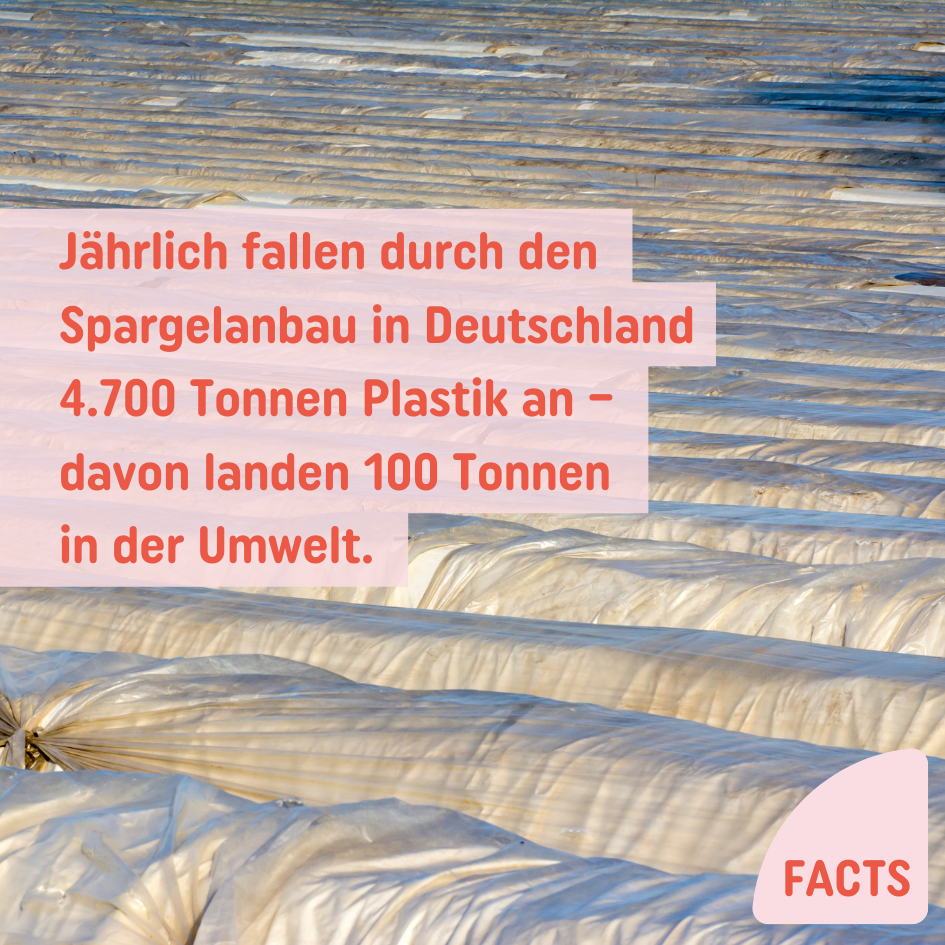
How sustainable is the asparagus season?
95 percent of white asparagus is grown under a so-called black-and-white film. This serves to regulate the heat and makes work in the field easier. As soon as the asparagus sticks its head out of the earthen wall, it turns purple and then green. If there were no film, farmers would have to pick asparagus several times a day to meet the quality requirements of German consumers and supermarkets.
Only 40 percent of the film used in asparagus cultivation is still recycled. Dirty film can be cleaned, but in reality this does not always happen. Then they are thrown away long before the end of thermally recycled during their lifetime.
While organic asparagus can also be grown under the black and white film, green asparagus does not need such a plastic cover . When it comes into contact with sunlight, chlorophyll is produced during photosynthesis, which ultimately turns the delicious stalks green, gives them a stronger flavor and increases their vitamin content.
China, Peru and Mexico export the most asparagus in the world. While the German asparagus season lasts from mid-April to traditionally June 24th, imported asparagus is usually available in supermarkets all year round. This means that German asparagus farmers are under pressure to pick their first asparagus spears earlier and earlier - and the black and white foil helps with this.
As consumers, we should not put stalks from the other side of the world in our shopping baskets, thereby accepting 20 times more CO2 emissions than regional asparagus . And supermarkets must finally adapt their range to the seasonal offerings in our region - because the best decision for the environment is to choose green organic asparagus in season and from the region.




Leave a comment
This site is protected by hCaptcha and the hCaptcha Privacy Policy and Terms of Service apply.